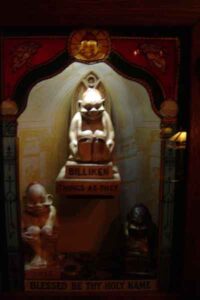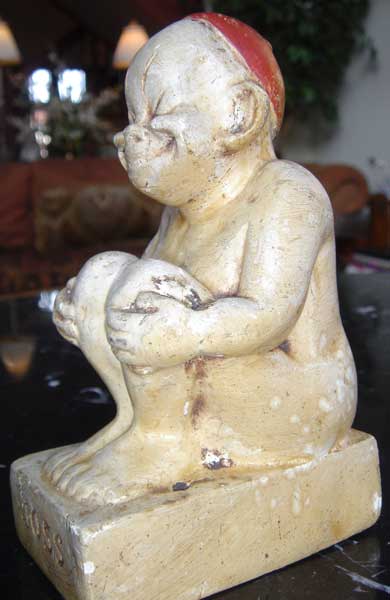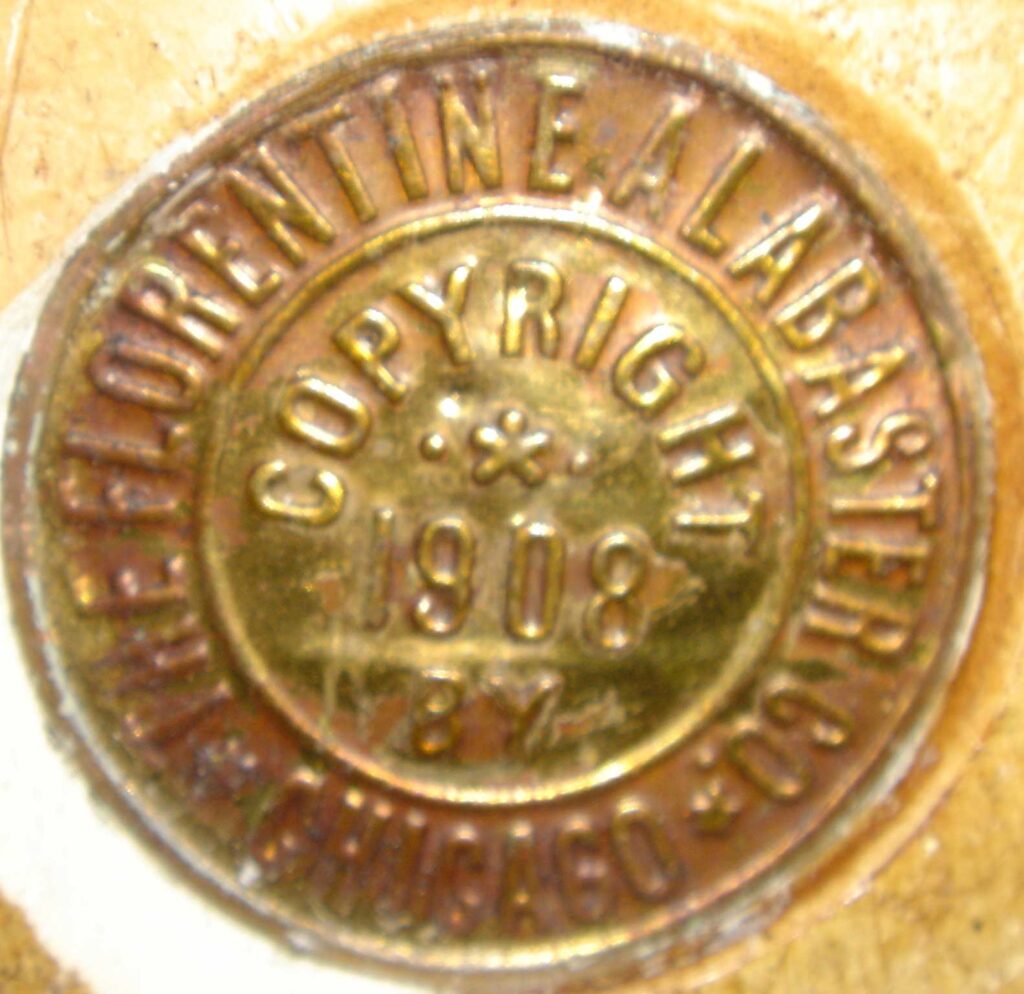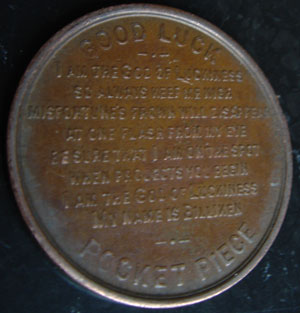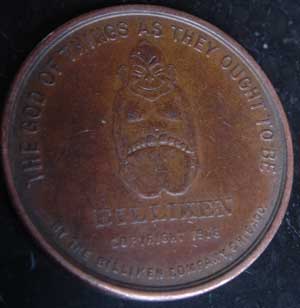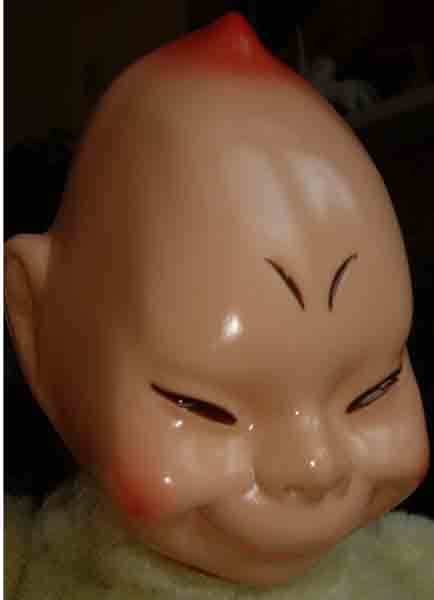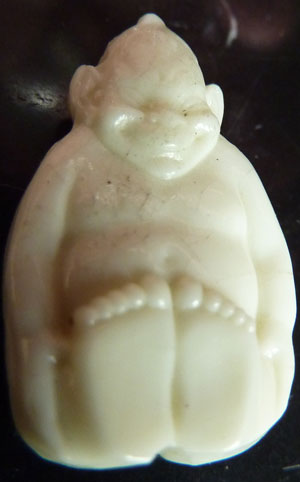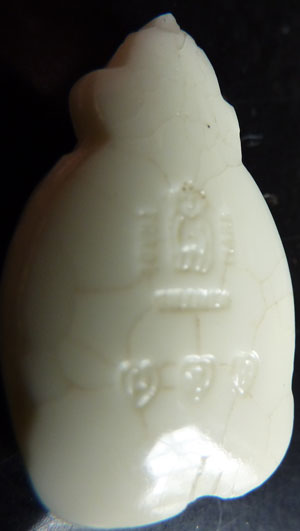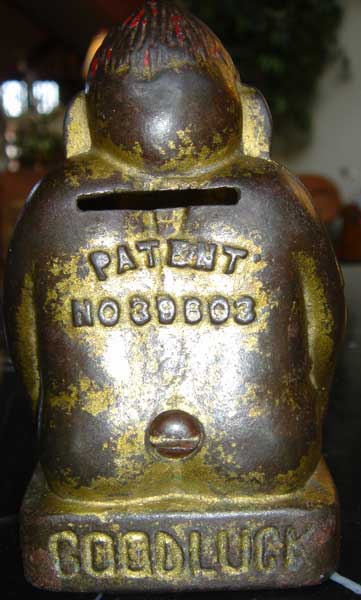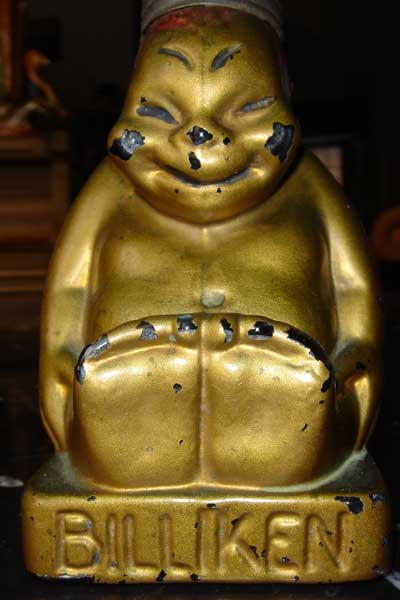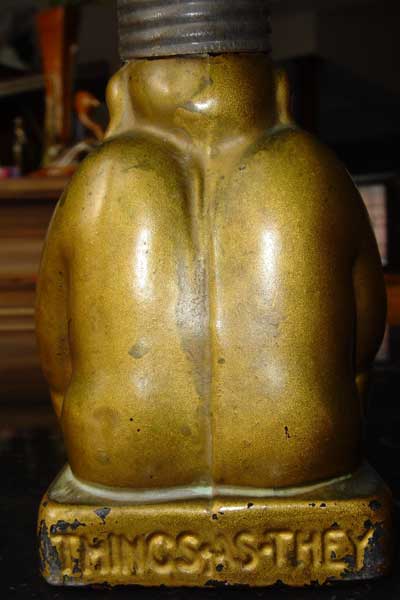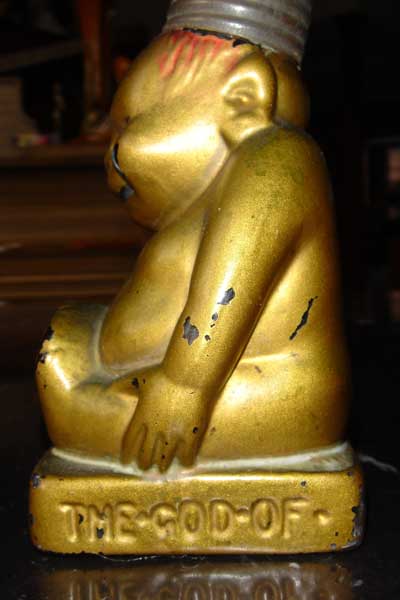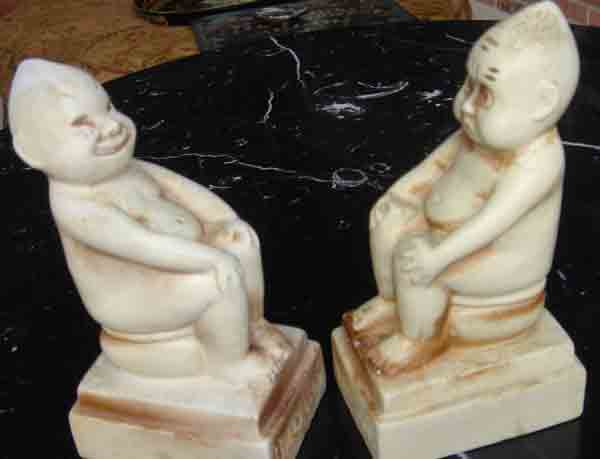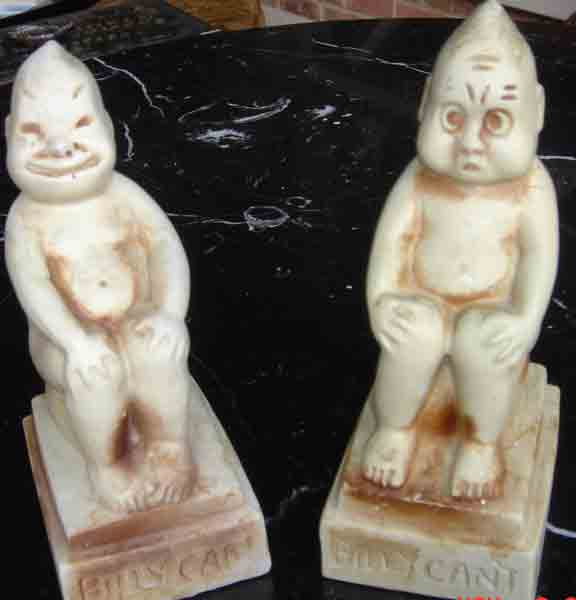
Billiken is The God Of Things As They Ought To Be. He is the most important deity in the Church of Good Luck. An excellent overview of the Billiken’s history by Dorothy Jean Ray is available here at the Billiken Lore page. Also a new article on Billiken History discusses the people who helped make Billiken an international success.
Billiken was designed by a Kansas City art teacher named Florence Pretz. Theories concerning the origin of the Billiken abound. In one version, Ms. Pretz simply dreamed of the Billiken. In another possible version she based the character on a pixie mentioned in the poem “Mr. Moon: A Song of the Little People,” by Canadian poets Bliss Carman and Richard Hovey. Another theory names new US President William Howard Taft (elected in November 1908) as the inspiration, with “Billy” possibly coupled with the Japanese honorific “Kun”. This theory sometimes includes the assertion that the Horsman Company, a licensee of the Billiken for dolls, was attempting to re-create the success of the Teddy Bear- a doll named for prior US President Theodore Roosevelt. However, that the name Billiken on chalkware figures and possibly banks predates the Horsman Company dolls, making this theory unlikely.
It has also been suggested that design appears to be inspired by the Joss figure manufactured by The Florentine Alabaster Company of Chicago. This is possible but also unlikely, since the design and legal work for the Billken patent was completed by June of 1908 and Joss is marked with a 1908 copyright date as well. But perhaps the same company manufactured both figures, because they were both made in Chicago and there are striking similarities between the way Joss and Billiken are made. Here is a picture of Joss and the medallion placed in the bottom o:f the figure (compare this to the medallions found on the Billiken figures)
It has also been suggested that Billiken was originally a Japanese figure called “Piriken” or “Pilliken” that was adapted by Ms. Pretz. However, evidence for this is lacking and it appears that Billiken was more likely created in the USA and imported to Japan, where the figure has remained more well-known than it has in its native country. You can go to the article on Billiken History to learn the real story of how Biliken was invented and how he was named!
Florence Pretz applied to the United States Patent and Trademark office for a design patent on Billiken on June 12, 1908 and Design Patent #39,603 was granted on October 6, 1908. Thus, Billiken became the first Patented God.
Billiken immediately became an international craze. Early Billikens were found as chalkware figures, dolls, banks, jewelry, lucky tokens, postcards and other items apparently licensed by The Billiken Company. Here are pictures of the token/pocket piece
Many other Billiken items came with poetry, such as this postcard:
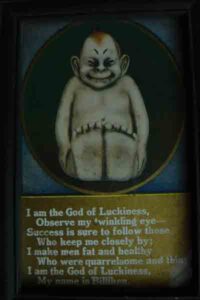
The chalkware figures were the first Billiken products. The chalkware figures were also later sold with a throne that carried the motto “The God Of Thing As They Ought To Be” around the base. Here is a photo of a Billiken on his throne from the main shrine at the Church of Good Luck:
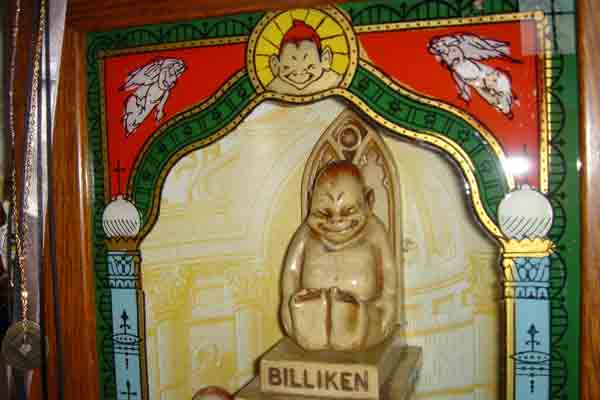
The plaster figures have a small metal medallion or coin inset into the plaster that gives some clues about the early days of the Billiken craze. The earliest versions read “The Craftsman’s Guild, Highland Park, Ill”. The Craftsman’s Guild was an organization that was part of the Arts and Crafts movement of the early 20th century. It was active from about 1900 until 1910 and is mentioned in a September 1907 issue of The Kindergarten-Primary magazine as being a supplier of wooden toys. Subsequent versions were marked “The Billiken Company Chicago”. The Billiken Company was set up to handle the rapidly growing demand for Billikens. Finally, the plaster figurines were marked with a medallion that mentions both the Craftsman’s Guild and The Billiken Company.
Go to the Billiken History article to learn more about the history of the Craftsman’s Guild and The Billiken Company and the people who were responsible for making Billiken an international success.
The Billiken design was licensed to the Horsman Doll Company and in 1909 they reportedly sold 200,000 dolls in the first six months. The dolls had a composition head of a Billiken on a stuffed teddy-bear body. They came with a certificate which included a verse and a promise of 99 years Good Luck. These dolls were reissued in the 1980s. The reissue is pictured here:
Another company that got a license to use the Billiken image was Paye and Baker. Paye and Baker is perhaps best known as a silversmith responsible for those little souvenier spoons and similar items. They made Billiken jewelry such as brooches, oins and charms.
The Billiken banks are attributed to the A.C. Williams Co. and came in at least two cast-iron versions: one a just a seated figure and the other a figure sitting on a throne similar to the chalkware throne design. The patent number is listed on the back of the figure.
You can see the three hearts with P& B in them as well as the Billiken “Trade Mark” on the back of this small Billiken charm. Many thanks to Mary G. for her kind donation of this Billiken!
Here is an example of a painted clear glass Billiken bottle:
This bottle is sometimes seen in milk glass and also with a shaker top. It was supposedly a candy container.
In 1911 a Masonic order – The Royal Order of Jesters took the Billiken as their mascot and ever since they have produced a wide range of Billiken-adorned paraphernalia: banks, barware, ashtrays, jewelry, tokens and so on. The ROJ Billiken figure is easily distinguished by the crown it wears, usually jauntily tiled to one side, or the accompanying ROJ motto “King of Mirth”.
In 1921 Saint Louis University took the Billiken as its mascot, which it retains to this day. The SLU Billiken of today is a rather pointy-eared version that doesn’t resemble the original very closely.
Billiken also took up residence in Alaska where he was carved by Happy Jack and became a popular mascot for the 1909 Alaska-Yukon-Pacific Exposition. He remains a staple subject for native carving to this day.
Billiken also was adopted by the Japanese where he seemed to fit right in with the 7 Lucky Gods. Billiken is especially popular in Osaka where a statue resides on an observation deck in the Tsutenkaku Tower. The Japanese made many Billiken objects including this set known as Billy Can and Billy Can’t:
Modern day Japan still reveres the Billiken. Here are a couple of Billiken items made in the 21st Century:
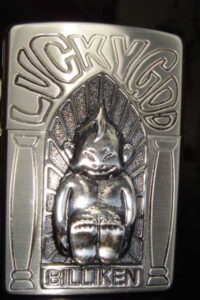
This is a fantastic Zippo windproof lighter, made in the USA, imported to Japan and then sent back to the US again for use lighting candles, incense and so on at the Church of Good Luck rituals and services.
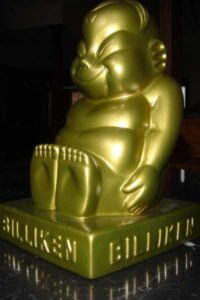
This is a vinyl coin bank, about 5 inches tall.. It is a modern-day Made in Japan interpretation of the classic A.C. Williams Billiken still bank.
Here is the seated Billiken at the center of the Shrine atop the altar at the Church of Good Luck:
